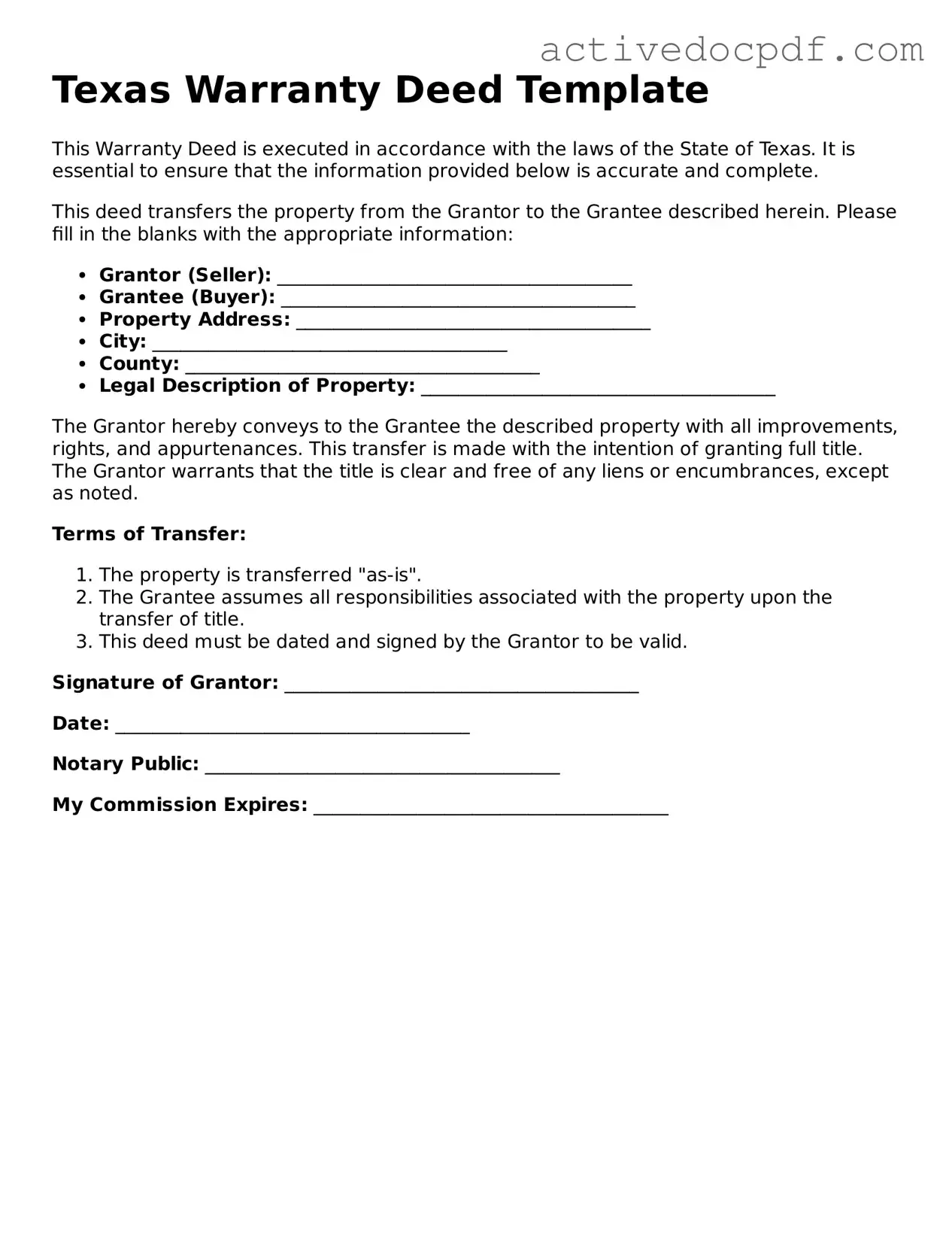A Texas Deed form is a legal document used to transfer ownership of real property from one party to another in the state of Texas. This form outlines the details of the transaction, including the names of the parties involved, a description of the property, and any conditions or covenants related to the transfer. The deed must be signed and notarized to be legally binding.
What types of deeds are available in Texas?
Texas recognizes several types of deeds, each serving different purposes. The most common types include:
-
General Warranty Deed:
Provides the highest level of protection to the buyer, guaranteeing that the seller holds clear title to the property.
-
Special Warranty Deed:
Offers a limited warranty, covering only the time the seller owned the property.
-
Quitclaim Deed:
Transfers whatever interest the seller has in the property without any warranties.
-
Deed of Trust:
Used in Texas to secure a loan, this deed involves three parties: the borrower, the lender, and a trustee.
Completing a Texas Deed form involves several key steps:
-
Identify the parties involved in the transaction, including the grantor (seller) and grantee (buyer).
-
Provide a legal description of the property, which can usually be found on the previous deed or in public records.
-
Include any necessary terms or conditions related to the transfer.
-
Sign the deed in the presence of a notary public.
Once completed, the deed should be filed with the county clerk's office where the property is located to ensure public record of the transfer.
Do I need an attorney to create a Texas Deed?
While it is not legally required to have an attorney to create a Texas Deed, consulting one can be beneficial. An attorney can provide guidance on the specific requirements and help ensure that the deed is properly executed and recorded. This can prevent potential disputes or issues with the title in the future.
What happens after the Texas Deed is recorded?
After the Texas Deed is recorded, it becomes part of the public record. This action serves several purposes:
-
It provides legal notice to third parties regarding the ownership of the property.
-
It protects the grantee's rights to the property against claims from other parties.
-
It establishes a clear chain of title, which is essential for future transactions involving the property.
It is advisable for the grantee to obtain a copy of the recorded deed for their records.
Can a Texas Deed be revoked or changed?
A Texas Deed cannot be unilaterally revoked once it has been executed and recorded. However, the parties involved can create a new deed to transfer the property again. If changes are necessary, such as correcting an error in the original deed, a new deed can be drafted to reflect the correct information. This new deed must also be signed and recorded to be effective.
